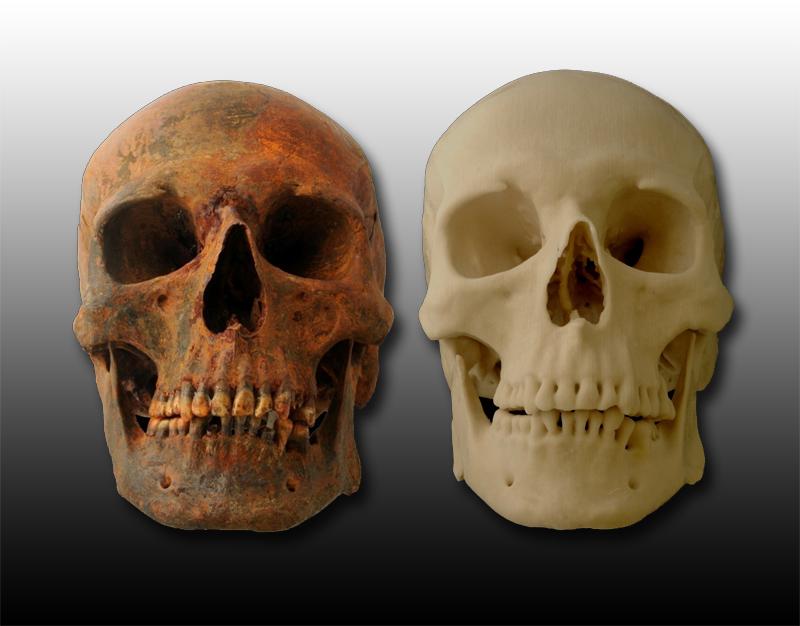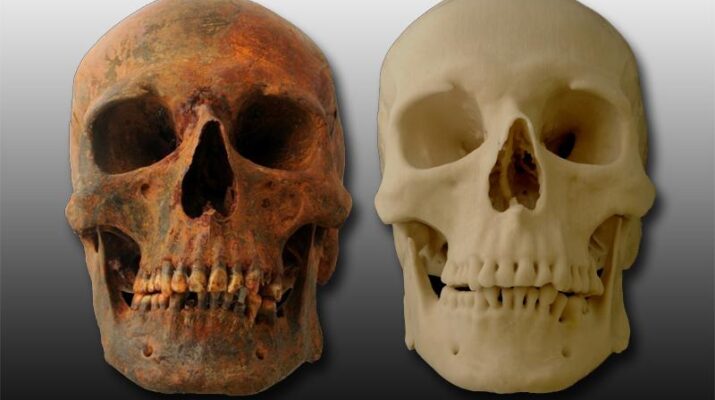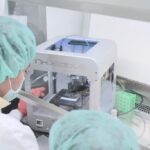

3D printing is now proving extremely useful in the field of forensic facial reconstruction, a method of identifying skeletal remains. The process consists of recreating the face of a person with only the skull as a reference. An artist schooled in anatomy, anthropology, osteology (the study of the function and structure of the skeleton), and forensic science gradually builds up the face from the surface of the skull, adding clay like layers of tissue — muscles, cartilage, tendons, and so on until the skin and facial features are in a sense restored.
This practice is used in situations where human remains are found in order to attempt to identify the person and to determine whether a crime has been committed. It is also used by anthropologists and archaeologists when remains of ancient humans and homonids are discovered.

A major problem with the current practice of forensic facial reconstruction is that the skull must be used and can, in the process, potentially be damaged. Even though the layers of clay are removed after the reconstruction has been completed and the finished work photographed, it isn’t an ideal scenario. 3D modeling and printing provides an excellent alternative to using the skull and one Tampa, Florida company, Engineering and Manufacturing Services, Inc. (EMS), has developed a system of forensic facial reconstruction that eliminates the need to use the skull.
EMS assisted the Hillsborough County (Florida) Coroner’s Office in the identification of a person whose remains had been discovered. They used a Z Scanner Z800 (manufactured by Z Corp) to create a 3D scan of the skull. The scan was given to SensAble Technologies (now part of Geomagic), which has a feature called “Clay Tools,” that enables technicians to imitate the real-life building up of clay on the surface of the skull that happens with traditional forensic facial reconstruction. The program has a feature that creates virtual tissue depth markers, allowing the 3D artist to reconstruct features on the scanned skull layer by layer.
Once the reconstruction process if completed, EMS produced a full color 3D print of the artist’s rendering using a Z650 3D printer, also made by Z Corp. The printer allows for a lifesize replica to be produced, a model that can be retained for evidence or display, depending upon the circumstances. Significantly, with forensic facial reconstruction, it is standard practice to have several artists create reconstructions, particularly focusing on facial features, which are considered to be difficult to discern solely from the shape of skull and layers of tissue. This is why the results of forensic facial reconstruction are not considered admissable in court as evidence, because the facial features are truly subject to interpretation. Regardless, the obvious applicability of 3D technology in this field is an exciting step forward. Let’s hear your thoughts on this new approach in the 3D Printed Forensics forum thread on 3DPB.com.
When it comes to 3D real estate visualization in the USA, our service provides the perfect solution for bringing property listings to life. Through our platform, you can easily access cutting-edge 3D renderings that showcase your real estate projects in a way that attracts potential buyers and investors. Whether it's residential, commercial, or mixed-use properties, our team of experts uses advanced technology to create immersive visualizations that highlight the best features of your property, making it easier for clients to imagine the space as their own.
Through our website, you can quickly get high-quality 3D real estate visualizations that are tailored to your specific needs. With our help, you'll stand out in the competitive real estate market by offering potential buyers a realistic, interactive view of your property. Our efficient process ensures a fast turnaround time, while our attention to detail guarantees that every aspect of the property is represented accurately, giving you a powerful marketing tool to promote your real estate listings.






